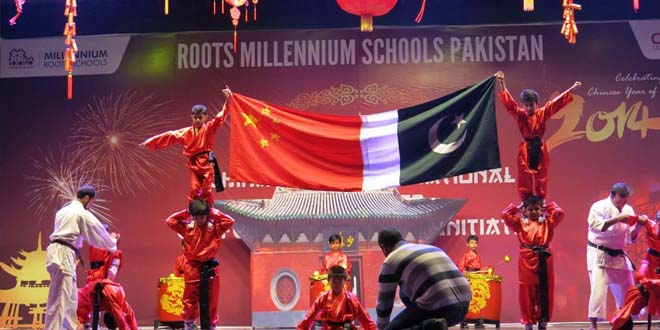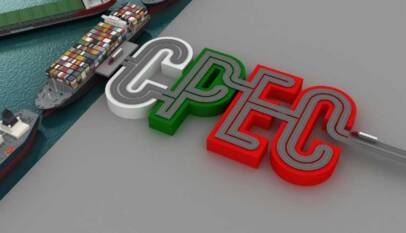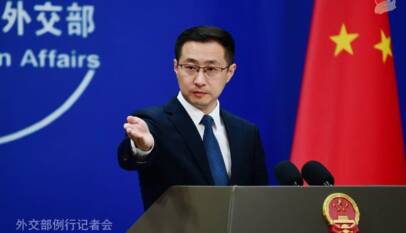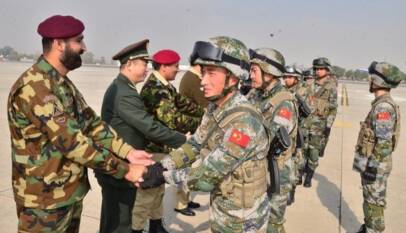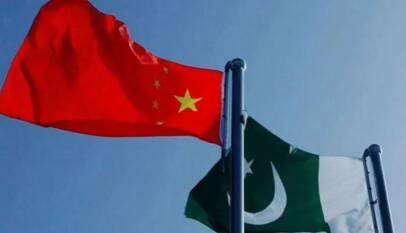Chinese and Pakistani Authorities Working on Six Cultural Exchange Programmes, Chinese Cultural Counsellor
Zhang Heqing, the cultural counsellor at the Chinese embassy remarked that authorities in China and Pakistan are outlining various cultural and educational exchange programmes to bolster the ties between two close friends. He addressed at the opening of Wuhan Photography and Intangible Cultural Heritage Exhibition at Pakistan National Council of Arts. He stressed that the purpose of arranging such cultural events are to make Pakistani students and people familiarise with the rich cultural heritage of China and encourage people-to-people contact, which is one of the core objectives of CPEC's second phase. The cultural counsellor told that six Cultural Exchange Programmes between Pakistan and China are under process for the year 2019-2020. Zhang stated Pakistan cultural week would be organized in Beijing mid-October to showcase Pakistani heritage. An exhibition on Gandhara art will be arranged at the National Museum of China on May 2021, the counsellor told.
ISLAMABAD: Chinese and Pakistani authorities are working on multiple cultural and educational exchange programmes to strengthen ties between the two countries, Zhang Heqing, cultural counsellor at the Chinese embassy, said on Saturday.
Mr Zhang, the director of the China Cultural Centre, was speaking after the opening of the Wuhan Photography and Intangible Cultural Heritage Exhibition and Art Workshop at the Pakistan National Council of Arts.
Speaking to Dawn, he said the event is part of various programmes and cultural exchanges celebrating the 70th anniversary of the foundation of the People’s Republic of China (PRC).
“The aim of organising such cultural events is to make Pakistani students and people understand the rich cultural heritage of China and promote people-to-people contact, which is one of the core objectives of CPEC’s second phase, and to celebrate the mid-autumn festival,” he said.
He added that both countries have a rich cultural heritage and tourist attractions that need to be explored and promoted.
Under the 2019-2022 Cultural Exchange Programme, China and Pakistan are working on six agreements to strengthen ties in the field of culture, education and tourism.
A Pakistan cultural week will be held in Beijing mid-October to showcase cultural heritage and a large exhibition of Gandhara art will be displayed at the National Museum of China in May 2021, Mr Zhang said.
The other agreements to be signed in the near future include the promotion of tourism, recognition of diploma and certificates in higher education, youth exchanges, promotion of co-production and exchange of films and television shows and the protection of cultural products and artefacts from trafficking.
Currently, 7,000 Pakistani students are studying at Chinese universities, he said, adding that a youth delegation of 100 people from Pakistan will visit China in the second week of November.
Speaking about progress on projects under the China-Pakistan Economic Corridor (CPEC), Mr Zhang said major projects in energy and infrastructure have been completed and are near completion.
“CPEC is a unique model of connectivity, trade and development which is an important part of the Belt and Road initiative,” he said.
Meanwhile, more than a hundred students and 15 teachers from public and private schools and colleges in the twin cities participated in an art workshop that included workshops on sculpture, embroidery, calligraphy and more.
The sculpture workshop was conducted by Hu Zuolin, a famous clay sculptor from Hubei province. He had made sculptures of Jack Ma, the cofounder of the Alibaba Group, as well as others.
Ali, a Chinese student from Hunan province studying at the Islamic International University Islamabad, was all praise for Mr Hu and his art, and was also impressed by the talent shown by the Pakistani students.
Mr Hu has had a considerable influence on folk art in China and enjoys a reputation as a ‘clay sculpture camera’.
The art of oil-paper umbrellas was demonstrated by artist Su Feng, who has inherited the art form that has a more than 150-year history integrating the refined umbrella making techniques from the Hunan, Hubei and Zhenjiang provinces.
In Chinese the ‘oil-paper umbrella’ is homophonic with ‘having children’, and symbolises the eastern ancient thought of integration of ‘man and nature’.
A Han embroidery technique workshop was conducted by Ren Wei, a famous embroidery artist and craftswoman from Hubei province.
Ms Ren is vice president of the Wuhan Han Embroidery Art Research Institute. The art, based on Chu and Han embroidery techniques, is mainly popular in Wuhan, Jingzhou, Honghu, Xiantao and other parts of Hubei.
In 2018, Han embroidery was included in China’s National Intangible Cultural Heritage List.
Fang Qixiong conducted a workshop on Hongmen Fist, demonstrating various techniques of the traditional Chinese boxing martial art.
Mr Fang is the president of the Wuhan Caidian Martial Arts Association.
Mr Yang Xianvi conducted a workshop on Shuanggou calligraphy, an ancient Chinese art. He is a master of the technique of making hollow looking characters featuring fine brushwork and continuous strokes.
His work has been used in stamps released on the 70th anniversary of the foundation of the PRC.
CPEC’s Success Story: $25 Billion Invested Across 38 Completed Projects
ISLAMABAD: A total of 38 projects worth over $25 billion have been completed and 23 develo…



